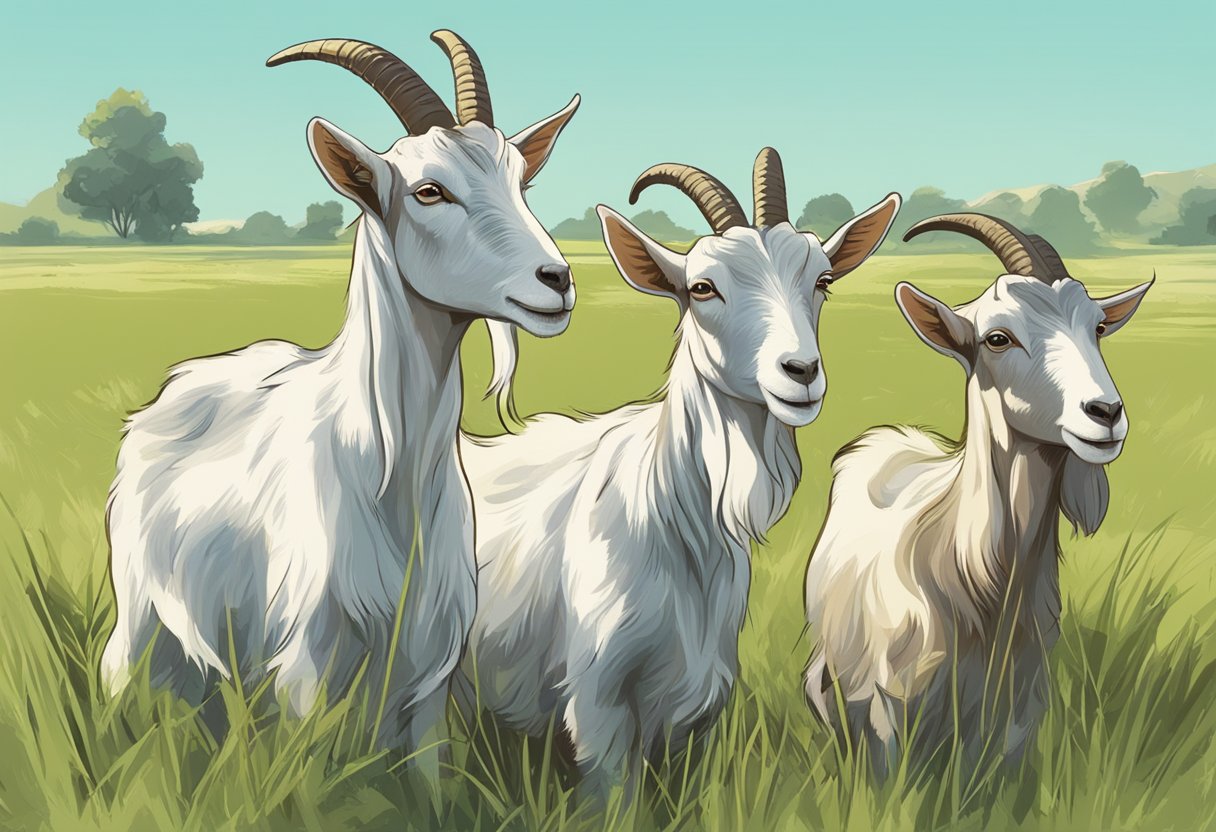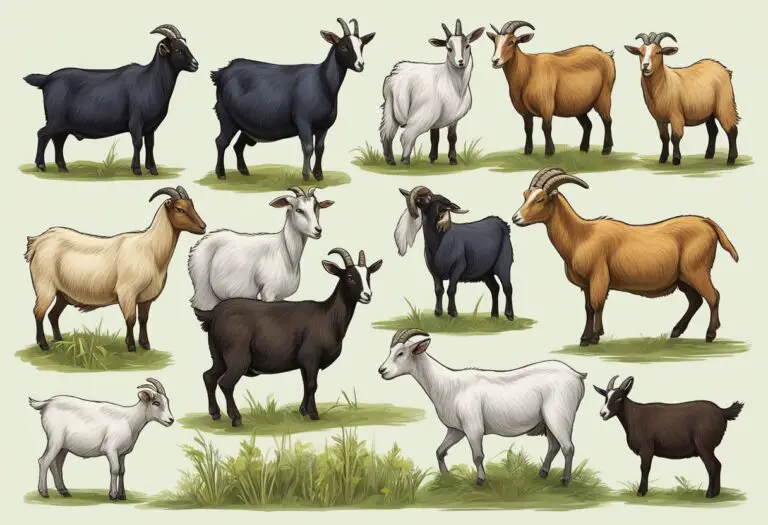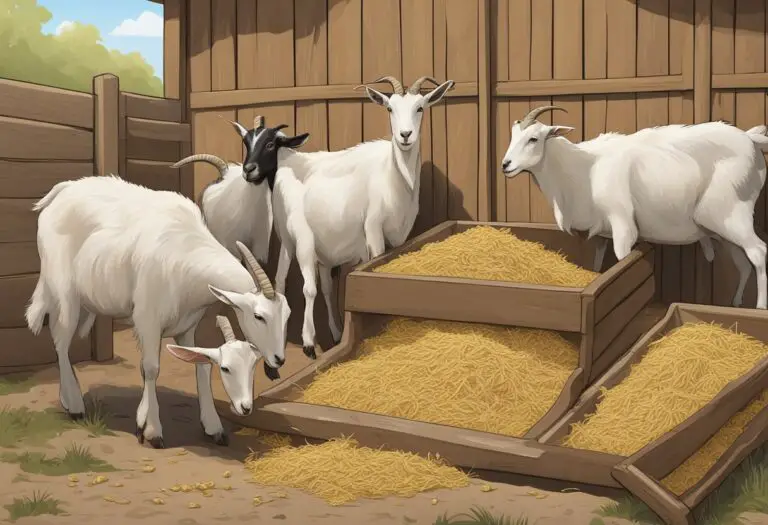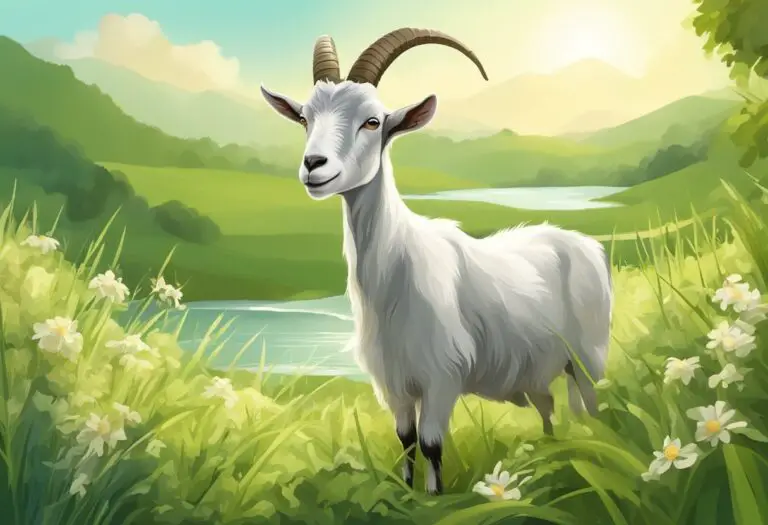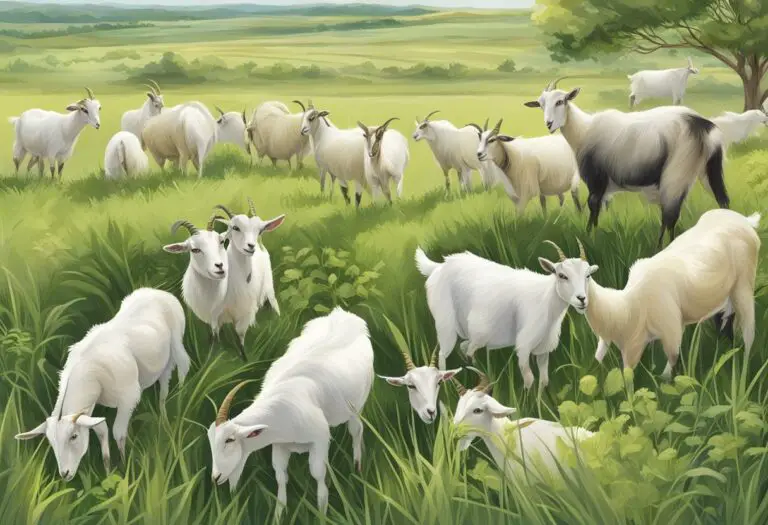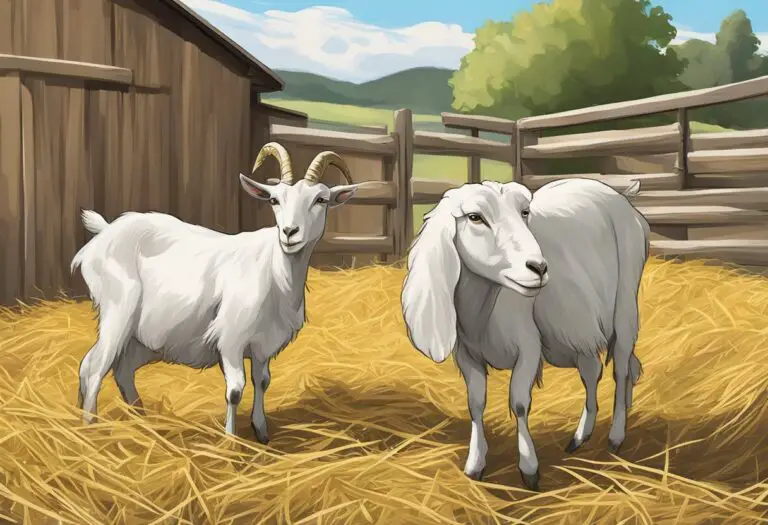Are Goats Ruminants? Explained
Goats are a common sight on farms and ranches all over the world. They are known for their playful personalities, their milk, and their meat. However, many people wonder if goats are ruminants. The answer is yes, goats are ruminants, just like cows, sheep, and other animals.
Ruminants are a group of mammals that have a unique digestive system. They have a four-chambered stomach that allows them to break down tough plant material, like grass and hay, into nutrients that their bodies can use. Goats are part of this group because they have this same digestive system. They are able to extract nutrients from low-quality forage and are often used to control weeds and brush on farms.
While goats are ruminants, they are not the same as cows or sheep. They have different digestive needs and require a different balance of nutrients in their diet. Additionally, goats have a unique ability to climb and jump that sets them apart from other ruminants. Understanding the unique characteristics of goats and their digestive system can help farmers and ranchers care for them properly and ensure they are getting the nutrients they need to thrive.
Defining Ruminants

Unique Digestive System
Ruminants are a group of mammals that possess a unique digestive system. They are characterized by their four-chambered stomach, which is composed of the rumen, reticulum, omasum, and abomasum. This digestive system allows ruminants to efficiently extract nutrients from plant materials that are otherwise indigestible to other animals.
The rumen is the largest chamber of the four and is responsible for the initial breakdown of food. It contains billions of microorganisms, such as bacteria, protozoa, and fungi, that work together to ferment and break down the food. This process creates volatile fatty acids, which are absorbed into the bloodstream and used as a source of energy.
Rumen Function
The rumen is the key component of a ruminant’s digestive system. It functions as a fermentation vat, where bacteria and other microorganisms break down the plant materials that the animal has ingested. The rumen is responsible for breaking down cellulose, hemicellulose, and other complex carbohydrates that are found in plants.
Ruminants must regurgitate and re-chew their food, a process known as rumination. This allows the food to be further broken down and mixed with saliva, which contains enzymes that aid in digestion. The chewed food is then swallowed again and passed through the other chambers of the stomach for further digestion and absorption of nutrients.
In conclusion, ruminants are a group of mammals with a unique digestive system that allows them to efficiently extract nutrients from plant materials. The rumen is the key component of this system, where bacteria and other microorganisms break down the plant materials through fermentation.
Goats as Ruminants

Goat Digestive Anatomy
Goats are classified as ruminants, which means they have a four-chambered stomach that allows them to digest tough and fibrous plant materials. The four chambers of the goat’s stomach include the rumen, reticulum, omasum, and abomasum. The rumen is the largest chamber and contains billions of microorganisms that help break down the cellulose in the goat’s diet. The reticulum acts as a filter to prevent large particles from entering the rest of the digestive system. The omasum absorbs water and minerals from the digesta before it enters the abomasum, which is similar to the stomach of a monogastric animal.
Feeding Habits of Goats
Goats are known for their ability to consume a wide variety of plant materials, including grasses, shrubs, and trees. They are also able to digest tough and fibrous plant materials that other animals cannot, thanks to their unique digestive system. Goats are selective feeders and will often browse on a variety of plants, rather than grazing on a single type of plant. They are able to extract nutrients from a variety of plants, which makes them well-suited for survival in harsh environments.
In conclusion, goats are ruminants with a unique digestive system that allows them to digest tough and fibrous plant materials. Their ability to consume a wide variety of plants makes them well-suited for survival in harsh environments.
Comparative Ruminant Anatomy

Similarities with Other Ruminants
Goats, like other ruminants, have a four-chambered stomach that allows them to effectively digest fibrous plant material. The four chambers are the rumen, reticulum, omasum, and abomasum. The rumen is the largest chamber and contains billions of microorganisms that break down cellulose and other complex carbohydrates. The reticulum is responsible for sorting and regurgitating food for further chewing, while the omasum absorbs water and minerals from the digesta. The abomasum is the true stomach, where gastric acid and digestive enzymes break down proteins and other nutrients.
In addition to their unique digestive system, goats also have a similar dental formula to other ruminants, with 32 teeth including a dental pad in the upper jaw. They also have a similar skeletal structure, with a long neck and slender legs adapted for grazing.
Differences from Non-Ruminants
While goats share many similarities with other ruminants, they also have some key differences from non-ruminants. For example, goats have a complex forestomach that allows them to digest cellulose and other complex carbohydrates. Non-ruminants, such as humans and dogs, lack this specialized digestive system and must rely on other mechanisms to break down plant material.
Goats also have a unique digestive strategy known as rumination, where they regurgitate and re-chew their food to aid in digestion. This process allows them to extract as much nutrition from their food as possible and is a key adaptation for survival in arid and semi-arid environments.
Overall, the comparative anatomy of goats and other ruminants provides insight into the unique adaptations that allow these animals to thrive on a diet of tough, fibrous plant material.
Nutritional Physiology

Microbial Fermentation
Goats are ruminants, which means that they have a four-chambered stomach that is specially designed to digest and ferment plant material. The first chamber, called the rumen, is where most of the microbial fermentation takes place. The rumen is home to a variety of microorganisms, including bacteria, protozoa, and fungi, which break down complex carbohydrates into simpler compounds that can be absorbed by the goat.
During microbial fermentation, the microorganisms produce volatile fatty acids (VFAs) as a byproduct. These VFAs are an important source of energy for the goat and can account for up to 70% of its total energy needs. The VFAs are absorbed through the rumen wall and transported to the liver, where they are converted into glucose and other nutrients that the goat can use for growth and maintenance.
Nutrient Absorption
After the VFAs are absorbed in the rumen, the remaining material passes into the second chamber, called the reticulum. From there, it moves into the third chamber, called the omasum, where excess water is absorbed and the material is further broken down.
Finally, the material enters the fourth chamber, called the abomasum, which is similar to the stomach of non-ruminant animals. In the abomasum, the material is mixed with digestive enzymes and acids, which break down proteins and other nutrients into their component parts. These nutrients are then absorbed through the wall of the abomasum and transported to the rest of the body.
Overall, the unique digestive system of goats allows them to efficiently extract nutrients from plant material and convert it into energy and other essential nutrients.
Ruminant Health and Diet

Common Health Issues
Goats are generally healthy animals, but they are susceptible to certain health issues. One common issue is parasites, such as worms, which can cause weight loss, diarrhea, and other problems. Another issue is respiratory infections, which can be caused by bacteria or viruses. These can cause coughing, nasal discharge, and other symptoms.
To prevent these health issues, it is important to maintain good hygiene and sanitation practices, as well as provide regular veterinary care. Goats should also be kept in clean and dry environments, and their living areas should be regularly cleaned and disinfected.
Dietary Requirements
As ruminants, goats have unique dietary requirements. They have a four-chambered stomach that allows them to digest tough plant materials, such as hay and grass. However, they also require a balanced diet that includes protein, minerals, and vitamins.
It is important to provide goats with high-quality forage, such as hay or pasture, as well as a source of protein, such as soybean meal or alfalfa. Additionally, goats require access to clean water and minerals, such as salt and calcium.
To ensure that goats receive a balanced diet, it is recommended to consult with a veterinarian or animal nutritionist. They can provide guidance on the appropriate type and amount of feed for goats based on their age, weight, and other factors.
Ruminant Livestock Management

Housing and Environment
Proper housing and environmental conditions are crucial for the health and well-being of ruminant livestock, including goats. Goats require a dry, well-ventilated, and clean living space that is free from drafts and excessive heat. They also need access to fresh water and a balanced diet that meets their nutritional needs.
It is important to ensure that the housing and environment are appropriate for the size and number of goats being kept. Overcrowding can lead to stress, disease, and reduced productivity. Additionally, goats should be kept in an area that is secure and protected from predators.
Herd Management Practices
Effective herd management practices are essential for the success of any livestock operation. This includes regular health checks, proper nutrition, and appropriate breeding practices.
Goats are social animals and should be kept in groups. The size of the group will depend on the available space and the number of goats being kept. Proper record-keeping is also important for monitoring the health and productivity of the herd.
In addition to regular health checks, goats should be vaccinated against common diseases and parasites. Proper nutrition is also important, and goats should be fed a balanced diet that includes roughage, such as hay or pasture, as well as grains and other supplements as needed.
Breeding practices should be carefully managed to ensure the health and genetic diversity of the herd. Breeding too closely can lead to genetic defects and reduced productivity. It is also important to properly manage the kidding process to ensure the health of both the mother and offspring.
Overall, effective ruminant livestock management practices are essential for the health and productivity of goats and other ruminants. By providing proper housing and environmental conditions, and implementing effective herd management practices, farmers can ensure the success of their livestock operation.

